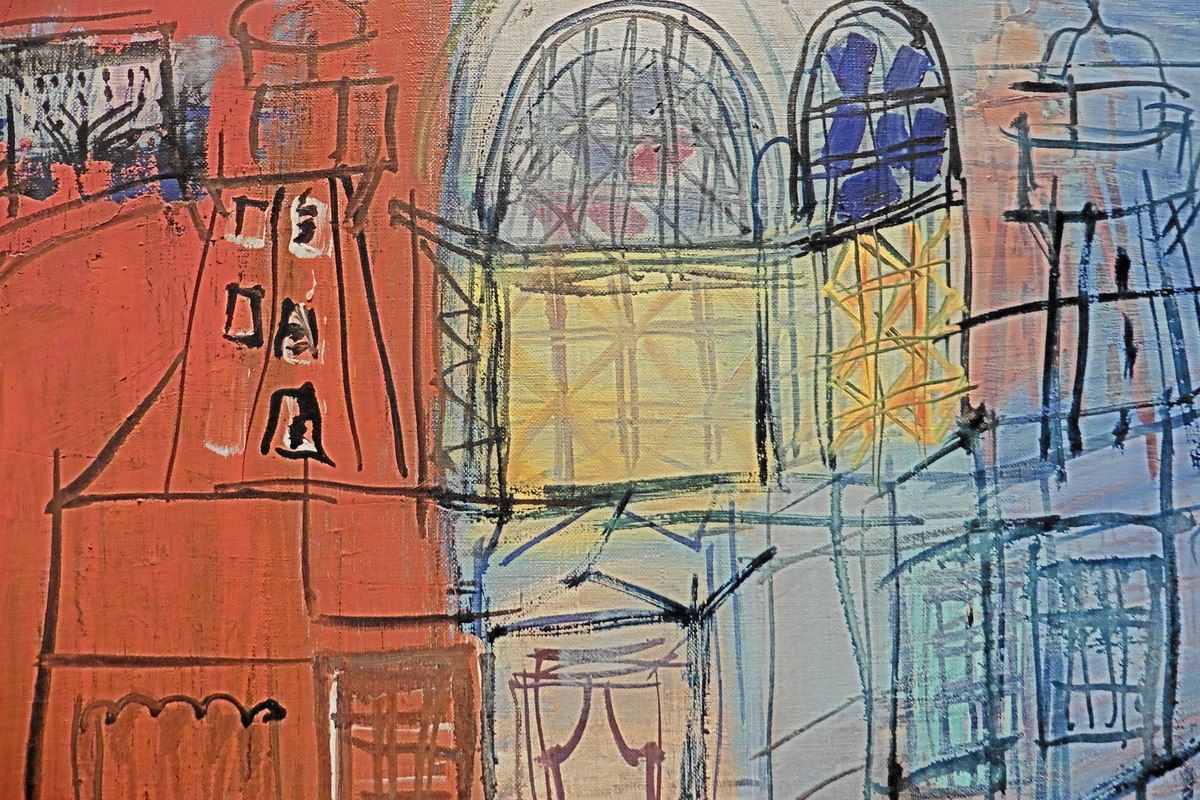Raoul Dufy, the promenade as motif.
/image%2F1038537%2F20150915%2Fob_3eda01_raoul-dufy-feu-d-artifice-a-nice.JPG)
Exhibition at the Nice Museum of Fine - Arts, 33th avenue des Baumettes, 06000 Nice, the 12th of june until the 4th of october, open all the days except monday, to 10 am until 18pm, phone : 04.92.15.28.28.
This museum is a rich looking house builds in 1878 for the ukrainian princess Kotschoubey in the Renaissance style of the genoese palces of the 17th century. It shelters a collection of masterpieces frome the 17th century until the 19th century send by the last french emperor Napoleon the third during the erection of the museum. The museum is also well known because we can see at the first floor the art work of Jules Cheret the man who has invented the modern bill.
The museum shelters a temporary collection who shows us several paintings painted by Raoul Dufy when he stayed on the french riviera. Born in the city of le Havre in 1877 he initiates himself with a teatcher who has recieved lessons from Ingres. He discovers the impressionnists in Paris but he is much more a seduced by the freedom of drawing and the freedom of colors introduced by the fauvism movement.
Raoul Dufy, "Coquilles with black color, maison Bianchini", et "Coquilles with red color, maison Bianchini", (1926)
We can find this freedom in the draws he realizes. These draws are divided in two parts : the sketchs drawn speedly in a sketchbook and the big drawing made with ink in which Raoul Dufy develop his own reflection. Raoul Dufy invents also a new way of painting. It calls it the unaccouplement because he unaccouples the color and the drawing in his paintings. After his studies Raoul Dufy becomes an artist but he works also as fashion designer for the silk manufecturers Bianchini and Férier. This work helps him to own money but also to improve and develop his new way of painting.
Raoul Dufy, "The casino of the Jetée - Promenade with two barouches", (1927), and "The casino", (1950)
Raoul Dufy will be fascinated all his life by the sea. This fascination begins when he is a child with the landscape of the Normandie and continues when he discovers the french riviera in 1926. He has painted speedly the french riviera and the casino of the Jetée - Promenade by applying tho colors in small strokes. The casino of the Jetée - Promenade will be the central topic of several Dufy's paintings. He paints this building in differents sides and will continue to think about and to paint this building long time after the destruction of this building by the nazis in 1944. We can find again the casino in the painting serie called "open windows" where he interiorizes and recomposes the landscape around him.
Raoul Dufy uses the blu but declines it in differents tones for painting the french riviera. He adds other colors too like : red, white, green, ochre and yellow. He do that for making a real caroussel of colors. Towards this caroussel Raoul Dufy show us again that is always influenced by the fauvism movement. But Raoul Dufy is a painter preoccupied by the search of new harmonies in colors and specially by a color much more deep than the others. He consideres like many painters that the black is the color he really needs. The black allows to retranscribe the shiny light and to invoke the bedazzlement. Raoul Dufy will use the black light intensively until his last paintings.
/image%2F1038537%2F20150630%2Fob_370eff_079.JPG)
The echappée vive, cinematographic creation - artetcinemas.over-blog.com
A creation of cinematography by Catherine Libert and Marie Losier, Villa Arson, Galerie Carrée, open all the week except thursday, screening all the time, to 2pm until 6pm in june and to 2pm until...
http://artetcinemas.over-blog.com/2015/06/the-echappee-vive-cinematographic-creation.html
/image%2F1038537%2F20150826%2Fob_0ac741_055.JPG)
Odyssey - artetcinemas.over-blog.com
Exhibition at the villa Arson, 20th Stephen Liegeard avenue, 06000 Nice, open all the days, except thuersday, to 2pm until 7pm (2pm until 6pm in september), entrance free. The exhibition of the 2015
/image%2F1038537%2F20150908%2Fob_a284e6_090.JPG)
Building a collection - artetcinemas.over-blog.com
Arman, Robert Barry, Christian Boltanski, Lourdes Castro, César, Mark Dion, Erro, Hans - Peter Feldmann, Claire Fontaine, Jeppe Hein, Linda Fregni Nagler, Camille Henrot, Bertrand Lavier, Anne et ...
http://artetcinemas.over-blog.com/2015/09/building-a-collection.html
/http%3A%2F%2Fpromenadesdesanglais2015.nice.fr%2Fimg%2Fliste-expo4.jpg)
Nice 2015, Promenade(S) de Anglais - 14 expositions, 13 sites
East to West, 20 centuries of promenades through Nice

/image%2F1038537%2F20150226%2Fob_49b7e0_006.JPG)
/image%2F1038537%2F20150915%2Fob_8cb06f_raoul-dufy-coquilles-sur-fond-noir.JPG)
/image%2F1038537%2F20150915%2Fob_c3027a_raoul-dufy-coquilles-sur-fond-rouge.JPG)


/image%2F1038537%2F20150915%2Fob_88493b_raoul-dufy-fenetre-a-nice-194.JPG)
/image%2F1038537%2F20150915%2Fob_fd1f22_raoul-dufy-nice-et-les-palmiers.JPG)
/image%2F1038537%2F20150915%2Fob_df6e1a_raoul-dufy-casino-bleu-a-nice-aux.JPG)
/image%2F1038537%2F20150915%2Fob_0de35f_raoul-dufy-les-vagues-1937.JPG)
/image%2F1038537%2F20150709%2Fob_51f5a0_therese-pouget-le-musee-internati.JPG)
/https%3A%2F%2Fwww.raouldufy.com%2Fimages%2Ftemplate%2Fheader2.jpg)


/image%2F1038537%2F20240422%2Fob_c74541_henri-de-toulouse-lautrec-le-diva.jpg)
/image%2F1038537%2F20240422%2Fob_c3afbf_henri-de-toulouse-lautrec-la-clow.jpg)
/image%2F1038537%2F20240419%2Fob_9e5b6a_mv5bn2y2odlkodummedag-dumbsday.jpg)
/image%2F1038537%2F20240419%2Fob_aa211b_mv5bn2y2odlkodummedag-dumbsday.jpg)